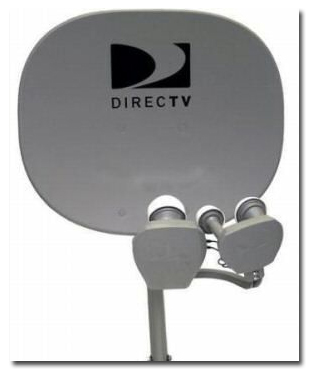|
|
 |
Knowledge Is Key
For Intelligent Decisions
Satellite Logic is a leading,
authoritative source of information in
the Satellite Industry. Located in the
heart of the Silicon Valley, Satellite
Logic provides one of the most
valuable and comprehensive
knowledge bases on the Satellite
market! This is a primary Worldwide
information center which enables our
clients to analyze, evaluate, inquire
and select their best tailored
solutions. Our company sets the
industry standards for targeted
buying leads, reflecting a dramatic
advance over traditional marketing
solutions.
|
|
|
 |

A few years ago, satellite TV dishes were huge contraptions that had to
be strategically positioned in an open field with no obstacles. In fact
only rich people could afford them. But these days, with the versatile
options satellite TV companies offer, there are many small dishes you
can buy. Almost everyone can enjoy the benefits of satellite TV. These
benefits include digital programming and a wide array of available
programs to watch.
Signing up for DIRECTV services requires getting the equipment
delivered and installed by professional installers and choosing a
package of program choices. For getting these services, you can choose
to go with a local dealer or you can choose an online dealer.
To receive DIRECTV broadcast signals, your standard satellite dish
must be correctly positioned. To receive HD service, a newer DIRECTV
Slimline Dish is required.
If your satellite dish was installed before October 2005, you do not
have a DIRECTV Slimline Dish. If you don't remember when your dish
was installed or if you're not sure that it is a 5-LNB, take a look at
your dish and write down the specifications. Then, call the customer
service and ask them.
If you have a DIRECTV HD receiver (model H20 or HR20) and do not
have the DIRECTV Slimline Dish, you can easily order a new dish for
free and set up installation.

Types of satellite dishes
There are six different DIRECTV dishes, which range in size from 18"
round to 36" x 22" oval. Locate your model number, printed in the
upper left corner of your remote. The newest DIRECTV Slimline Dish can
be identified by the thin horizontal LNB section and by the word "Slimline"
written on the dish. Another option woud be to identify the earlier
Slimline dish by the two separate LNB sections.
Installation Location
To receive DIRECTV programming, your home needs a clear view of the
southern sky, unblocked by trees or buildings. Most dishes are installed
on a roof or balcony, but other arrangements can be made to
accommodate your structure and preferences. Most DIRECTV customers
need just one dish, no matter how many rooms have DIRECTV service.
Dish Pointing Basics
To receive DIRECTV broadcast signals, your standard satellite dish must
be correctly positioned, which is fairly simple to do yourself using
DIRECTV's Dish Pointer. Or you can download the self-installation guide
from DIRECTV website. If you've purchased a DIRECTV multi-satellite
system, you'll need professional installation.
Determining azimuth and elevation
To aim your dish, you'll need to know your azimuth and elevation
coordinates. Azimuth relates to the left-to-right positioning of your dish.
Elevation concerns the up-and-down positioning of your dish. Your
DIRECTV receiver is programmed to give you these coordinates, helping
you point your dish to the right direction.
|
|
|
|
